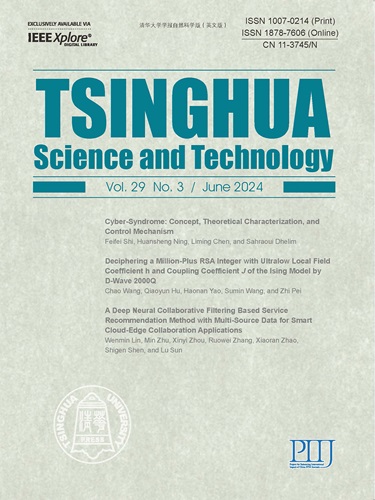无人机- irs辅助海上边缘计算网络的资源管理和轨迹优化
IF 3.5
1区 计算机科学
Q1 Multidisciplinary
引用次数: 0
摘要
随着海事无线设备的指数级增长和海事应用的快速发展,传统的海事通信网络在支持计算密集型和延迟关键型任务时遇到了通信和计算的限制。边缘计算和智能反射表面(IRS)已经成为有前途的技术,可以改善计算能力和电池容量有限的海事设备的通信和计算服务。研究了一种机载IRS辅助海上边缘计算网络,该网络通过非正交多址(NOMA)协议,协助无人水面飞行器(usv)向边缘服务器传输数据。我们提出了一种资源管理和轨迹优化方案,通过联合优化子槽时长、卸载比、发射功率、边缘计算能力分配、UIRS相移和UIRS轨迹,以最小化总体能耗。由于优化问题的非凸性,我们提出了一种将原问题分解为两个子问题的两层方法。顶层子问题采用半确定松弛(SDR)方法求解,底层子问题采用深度确定性策略梯度(DDPG)算法求解。数值结果表明,该方案能够有效地降低整体能耗。本文章由计算机程序翻译,如有差异,请以英文原文为准。
Resource Management and Trajectory Optimization for UAV-IRS Assisted Maritime Edge Computing Networks
With the exponential growth of maritime wireless devices and the rapid development of maritime applications, traditional maritime communication networks encounter communication and computation limitations in supporting computation-intensive and latency-critical tasks. Edge computing and Intelligent Reflecting Surface (IRS) have emerged as promising techniques to improve communication and computation services for maritime devices with limited computation capabilities and battery capacity. This paper studies an IRS Mounted on Unmanned Aerial Vehicle (UIRS) assisted maritime edge computing network, in which the UIRS is deployed to assist the transmission from Unmanned Surface Vehicles (USVs) to the edge server via Non-Orthogonal Multiple Access (NOMA) protocol. We propose a resource management and trajectory optimization scheme by jointly optimizing subslot duration, offloading ratios, transmit power, edge computation capability allocation, UIRS phase shifts and UIRS trajectory, aiming at minimizing the overall energy consumption. Since the non-convex nature of the optimization problem, we propose a two-layered method by decomposing the original problem into two subproblems. The top-layered subproblem is solved by the Semi-Definite Relaxation (SDR) method and the underlying-layered subproblem is solved by the Deep Deterministic Policy Gradient (DDPG) algorithm. Numerical results demonstrate that our proposed scheme can effectively and efficiently reduce overall energy consumption.
求助全文
通过发布文献求助,成功后即可免费获取论文全文。
去求助
来源期刊

Tsinghua Science and Technology
COMPUTER SCIENCE, INFORMATION SYSTEMSCOMPU-COMPUTER SCIENCE, SOFTWARE ENGINEERING
CiteScore
10.20
自引率
10.60%
发文量
2340
期刊介绍:
Tsinghua Science and Technology (Tsinghua Sci Technol) started publication in 1996. It is an international academic journal sponsored by Tsinghua University and is published bimonthly. This journal aims at presenting the up-to-date scientific achievements in computer science, electronic engineering, and other IT fields. Contributions all over the world are welcome.
 求助内容:
求助内容: 应助结果提醒方式:
应助结果提醒方式:


